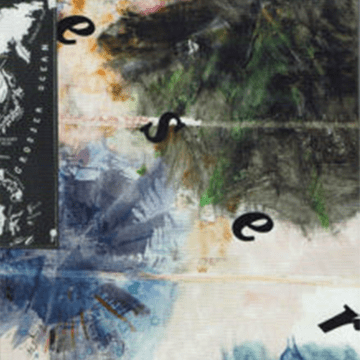This book introduces camera-based practices at the intersections of artistic and ethnographic research that critically examine the means of their own production and social embeddedness. In shared practices such as recording in the field, editing in post-production and modes of presentation, the camera is involved as an agent rather than an innocent device. How does the camera grapple with the invisible and how does it reveal what the camerawoman is unable to see? How do films, videos and photographs provide access to vulnerable knowledges and what presentation formats can extend the linearity of narration?
Tag: artistic research
Xenogenesis – The Otolith Group
The publishing of the first catalogue raisonné on the work of the Otolith Group is timely and comes at a pivotal point in their practice. The work of this London-based artist’s collective comprised of Anjalika Sagar and Kodwo Eshun covers politics of race and diversity and incorporates film making and post-lens-based essayistic aesthetics that explore the temporal anomalies, anthropic inversions, and synthetic alienation of the posthuman, the inhuman, the non-human, and the complexity of the envi-ronmental conditions of life we all face.
They inhabit while working
Elsewhere critical thinking and mundane life have followed separate paths, one rending the other impossible or irrelevant. Somehow, in some worlds, you can’t do one while doing the other. In Jaana Laakkonen’s book we have a record of the successful transgression of this binary prohibition developed through years of careful artistic practice and living with reading.
School of Waters
Mediterranea 19—School of Waters imagines a Biennale as a temporary school inspired by radical and experimental pedago- gies and the way they challenge artistic, curatorial, and research formats. From this standpoint, School of Waters acts as a collective tool to defamiliarise stereotypes that manipulate our geographical imaginaries, especially those linked to the eurocen- tric interpretation of the Mediterranean area.
Brancusi. An Afterlife
Posthumous interpretations of the life and work of Constantin Brancusi, as employed by Alexandra Croitoru in her artistic research, are part of what can be understood as the ‘Brancusi effect’ in post-Stalinist Romanian culture. Unlike the established concept of influence, which denotes a relationship of causality between an active agent and a passive receptor, the term ‘effect’, the same as ‘afterlife’, has the advantage of affirming a plurality of cultural agents that contribute to a given cultural construct; it also allows the affirmation of a retrospective influence on the meaning of Brancusi via terms such as re-contextualisation, re-modeling, re-signification, etc. The cultural signifier Brancusi has inevitably expanded its range of significations. Readings of it, as well as its cultural meaning, can no longer be purely aesthetic.
The Cast
Film material 7 / In collaboration with Till Gathmann. Including the films Transformation Scenario, 70.001, and Faux Terrain, as well as a visual essay, a glossary and texts by Heike Geißler, Fanni Fetzer, and Franciska Zólyom.
Eser
Eser is a comprehensive publication on Judith Raum’s works, installations and lecture performance texts from 2011 to 2014. It is also a theoretical reader and material collection on the semi-colonial advance of German entrepreneurs and bankers into the Ottoman Empire before World War I in connection with the construction of the Anatolian Railway. In this frame, the logic of capitalism and geopolitical interests connected the engineers’ tasks with less obvious efforts: to get a hold of Anatolian agriculture, archaeology and the working conditions in the country. Judith Raum’s work suggests that gestures and rhetoric of power and domination are the consequences of an economic principle that did not end with the colonial era and in fact persist today. Her works and texts take her research on site and in archives as a starting point, they exhibit an autonomous aesthetic dimension, however, and as such suggest an alternative approach to ‘artistic research’.






